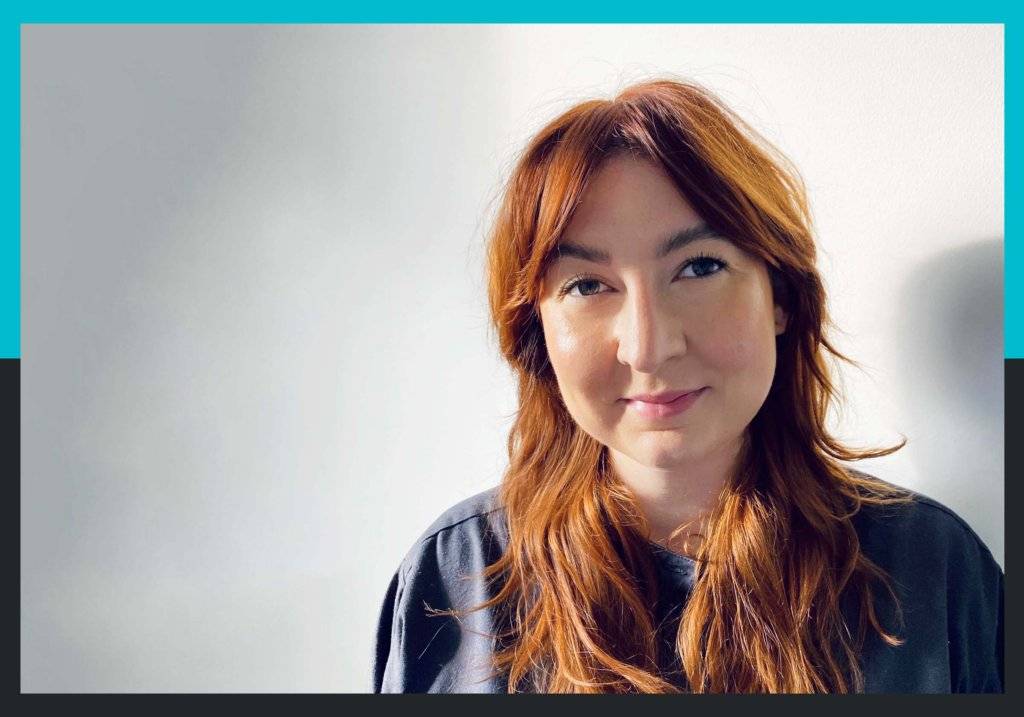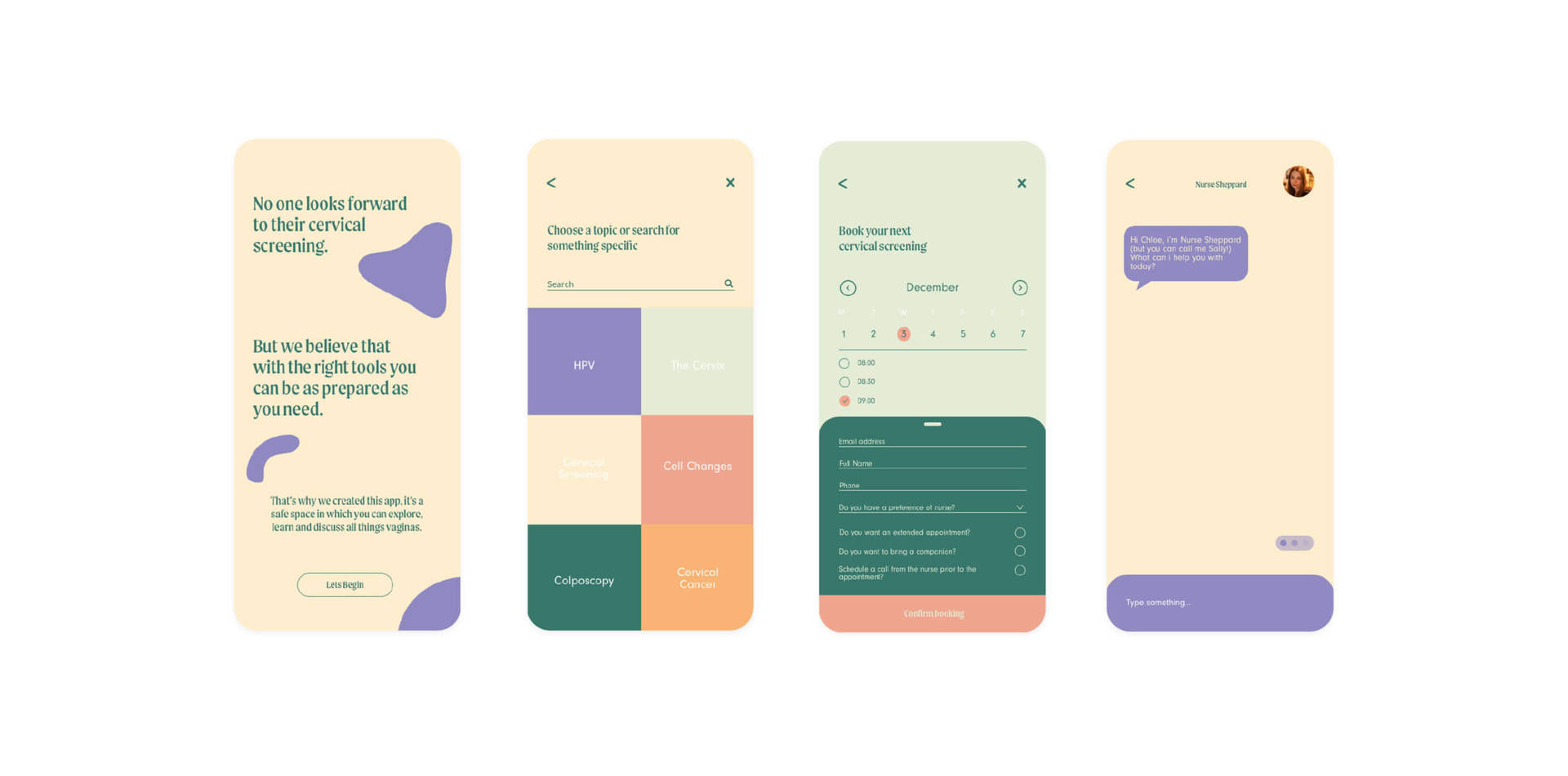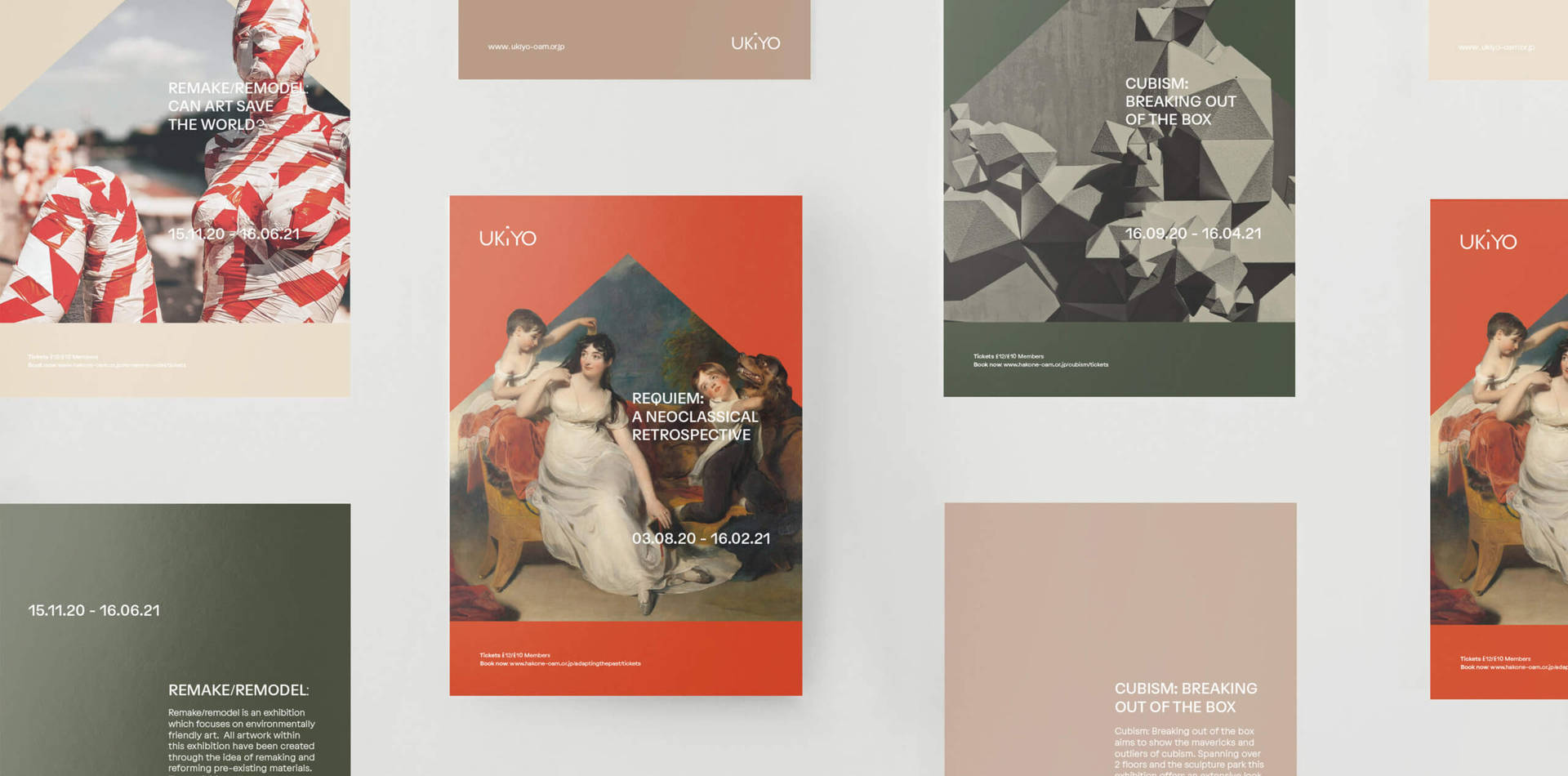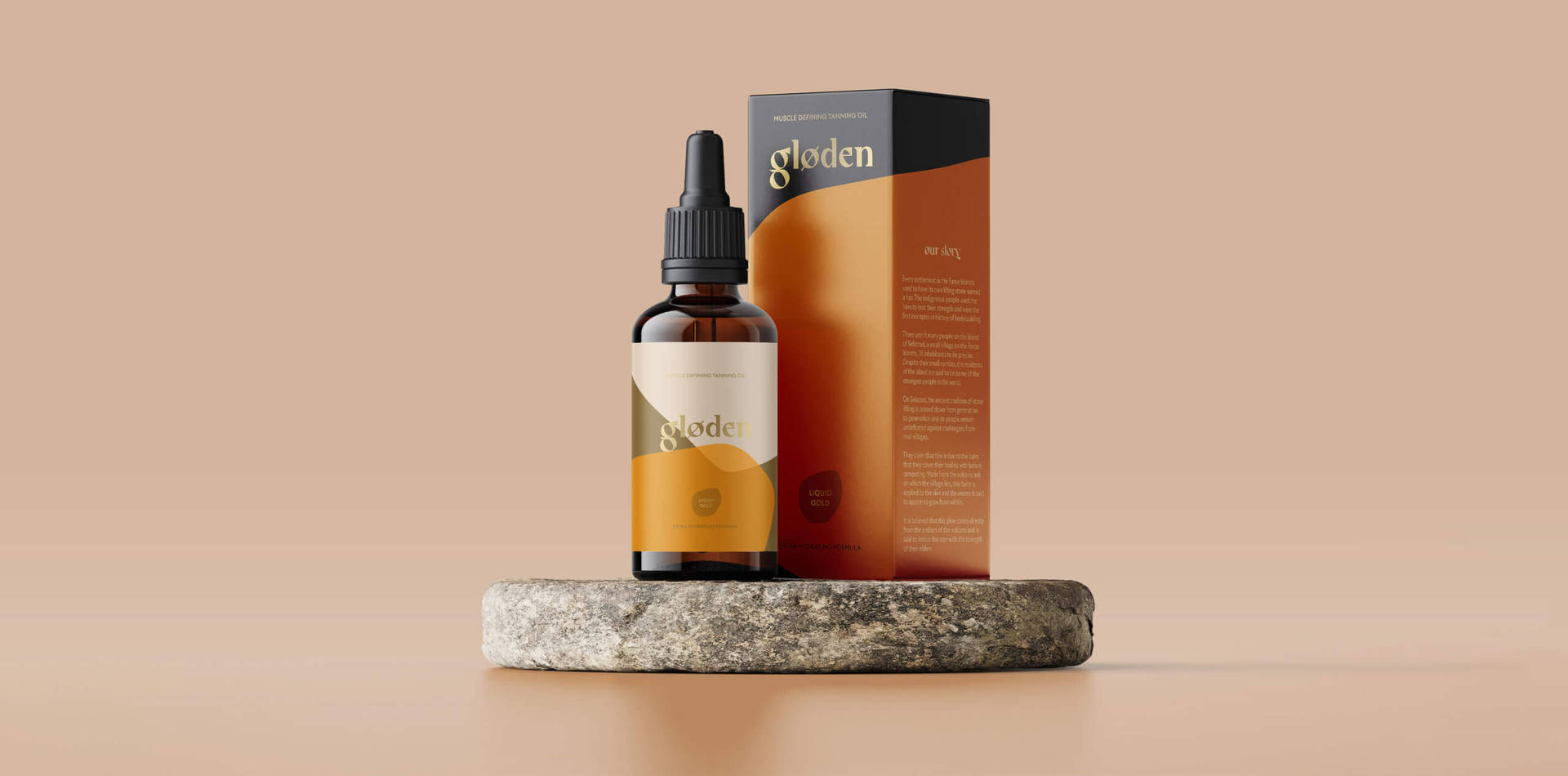Describing herself as a designer, illustrator, (sometimes) printmaker, full-time book worm and cinephile, it’s no surprise that Charlotte Jepson creates work which demonstrates an impressive range of skills and ideas. Interested in all forms of creativity, it wasn’t until finishing a degree in Contemporary Art Practice and working in various jobs outside the creative industry, that Charlotte decided to retrain in graphic design: “I love problem solving and graphic design is basically visual problem solving, so combining that with my creative background seemed like my perfect job”.
Charlotte specialises in visual identities and packaging, creating elegant and refined work which often features impressive illustration skills and carefully curated typography. Finding inspiration in the everyday world, etymology, film, and photography, she’s drawn towards anything that helps her visualise new concepts – images or words can spark fresh ideas. Charlotte’s knowledge of design, art and art theory allows her to develop sophisticated design solutions to project briefs. The projects she cites as being most proud of are the ones with unexpected outcomes: “where nearly everything expected to happen didn’t… and from this I was able to adapt, rethink ideas and reach a stronger outcome.”
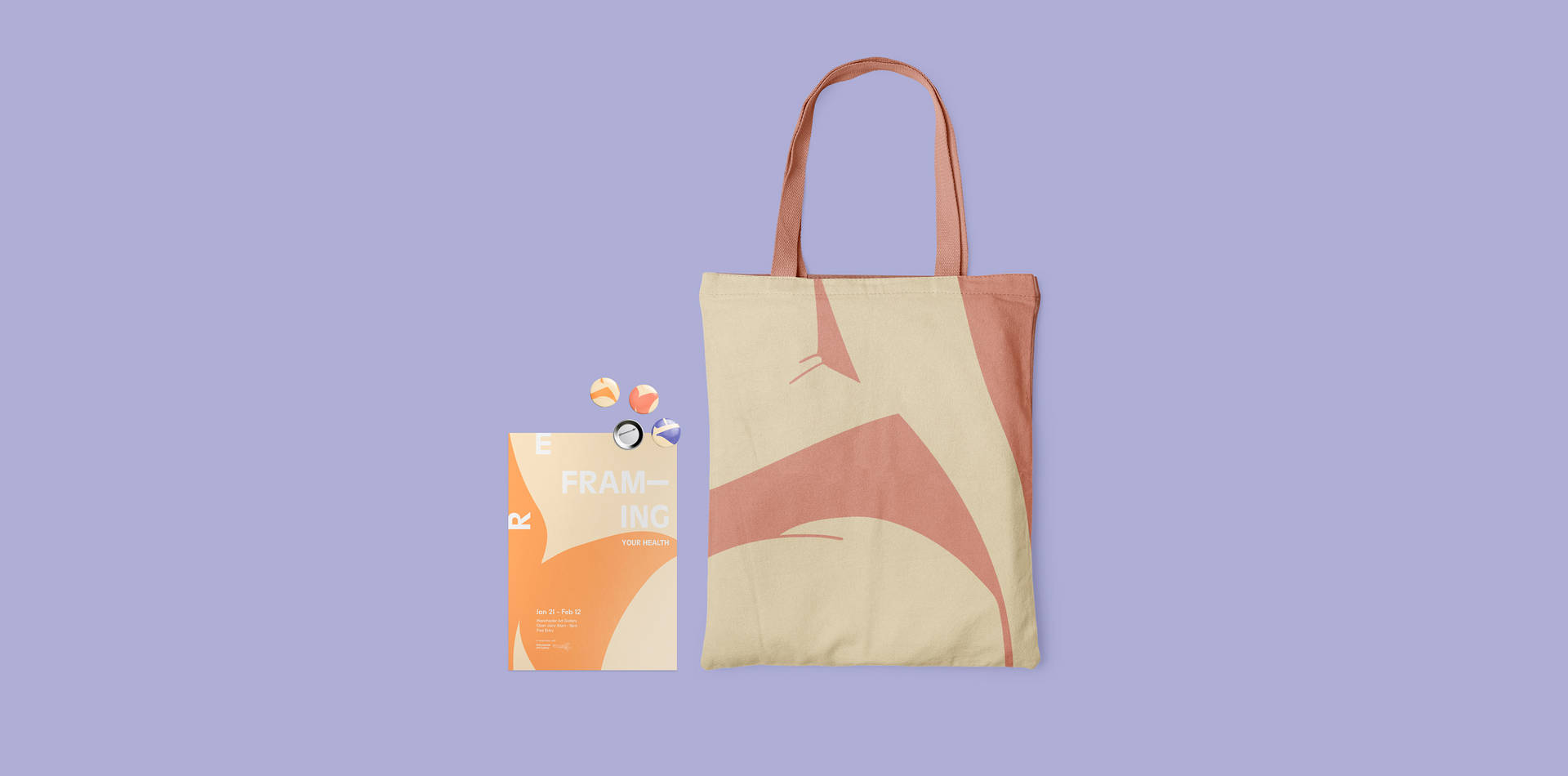
We talked with Charlotte to find out more about her conceptual approach, combining illustration and design in her practice and landing her current role as a designer for Manchester (UK) based award winning creative agency Toyfight.
Why did you decide to become a designer and illustrator?
I’ve always enjoyed using creative thinking to solve problems and growing up I was always more inclined towards the creative subjects, particularly art. I ended up studying Contemporary Art at university and whilst that was great, once I finished, I struggled to see how I could apply what I had learnt into a career. From there I moved about just doing different non-creative jobs out of necessity but always found myself trying to find ways to make my jobs creative. I continued to draw and create illustrations, and would do commissions here and there, but it wasn’t until I helped my friend who was studying graphic design with a project, that I discovered the possibilities of design. I love problem solving and graphic design is basically visual problem solving, so combining that with my creative background seemed like my perfect job.
Where do you get your inspiration from and how do you approach a new project?
As cheesy as it sounds, I draw inspiration from everywhere. Coming from an art background I find myself coming back to the art movements or theories I learnt at university. But it can simply be a podcast I listen to or an article I read that can spark an idea. I’m really interested in the etymology of words, and I find a lot of ideas can be generated from this. For my illustrative work I tend to get inspiration from films – lighting and compositions are important to how I approach an illustration piece. When it comes to starting a project you can’t go wrong with a lot of research, you never know where a tangent will take you. Initially, I don’t say no to any ideas or words that comes to mind, and I’ll really try to push a concept as far as I can to really make sure it’s strong enough.
“Initially, I don’t say no to any ideas or words that comes to mind, and I’ll really try to push a concept as far as I can to really make sure it’s strong enough.”
Can you tell us about a standout project that you’ve worked on and why it’s important to you.
My favourite project is a conceptual campaign I created during my time at Shillington. The project is aimed at increasing awareness and encouraging openness to discuss cervical screening attendance. It’s not a pleasant experience but it can be literally lifesaving when checking for cell changes and it’s a subject matter close to my heart.
Initially, I researched into why attendance is so low and then identified that 25-29 year-olds were the lowest attendees in 21 years. From there, I identified key factors which were causations of low attendance; this included things like embarrassment of bodies, not knowing what to expect and woefully inadequate support for trans and/or non-binary people. When you take a step back and see these as reasons why thousands of people with a cervix don’t get screened, it’s not on them but society as a whole. This campaign was my way of trying to open up a dialogue relating to this.
The main concept to come out of it was to ‘not miss the bigger picture’. I created illustrations of bodies on the microcosm so at first glance you may think they’re abstract patterns, but on further examination you realise that they are bodies. In the same way you would view these pictures I wanted people to view their ideas and reasonings on a micro and macro scale for why they do or don’t attend screenings. These illustrations became posters which were accompanied by stats on cervical screenings or little-known facts that may be useful for those who may be worried to attend. The campaign culminated into an app that I designed based on research found. The app would allow users to inform themselves at their own pace on different aspects of screenings, speak directly with nurses and even book their appointment through the app with additional requests which are always available when booking but are rarely highlighted.
“When you take a step back and see these as reasons why thousands of people with a cervix don’t get screened, it’s not on them but society as a whole. This campaign was my way of trying to open up a dialogue relating to this.”
How has starting your career the design industry during a pandemic impacted your journey so far?
I was about six weeks into my Shillington course when we went into the first lockdown. The initial change was difficult as everyone was trying to find their feet with online learning, and I missed the buzz of being in the studio. However, my tutor was fantastic, and I don’t feel like I missed out on much. As the year went on, I did sometimes feel my creativity was stifled from being primarily confined to four walls, but I took great comfort from everyone embracing online life. For all the downsides, I think the pandemic has shown people, that remote and online learning and connectivity really can work. Joining groups like Design by Women and Ladies, Wine and Design Manchester has opened me up to a network of like-minded people who were either in the same boat as me or were just up for a chat or collaboration. I hope that it’s something that continues even as we (hopefully) move away from the pandemic – I think there’s so much we can learn from people outside our regular sphere that we can access through online platforms.
Congrats on getting your current role at the agency Toyfight and what’s it been like so far?
I was already in full time employment when I graduated from Shillington, which meant I was fortunate enough to be able to take my time finding my first design role. It was tough, job hunting during the pandemic so for the most part I made sure my portfolio was ready to go when I saw anything come up, and I kept myself busy with freelance work. I really wanted to work for an agency, so I wrote up a hit-list of places I really admired and wanted to work for and made sure I was following all their social media, regularly checking Linkedin and job boards etc. It took eight months until I saw Toyfight were looking for a Designer. I literally scrambled to send over my portfolio and luckily managed to get an interview and then was offered the role.
It still doesn’t feel real sometimes and I’m so grateful to have landed this role in such an awesome and supportive agency. It’s great to learn from such knowledgeable designers and the work is really interesting. I feel so lucky that I get to go to work and feel passionate about what I do.
What top tips would you give to current design students or creatives considering a career in the design industry?
The one thing that we were taught over and over again was ‘progress not perfection’. The further I’ve gone along in my career the more I understand and appreciate that saying. When I first started, I wanted everything to be perfect from the outset and hated having to show things I didn’t consider finished, but that’s just not realistic and leads to frustration. Don’t strive for perfection first time, instead embrace the failures, sit with them, and learn what and why it didn’t work, then you come out swinging. The projects I am most proud of are the ones where nearly everything I expected to happen didn’t or didn’t go as planned and from this I was able to adapt, rethink ideas and reach a stronger outcome. For those considering a career in design – do it! It’s honestly the best decision I ever made.
“The one thing that we were taught over and over again was ‘progress not perfection’. The further I’ve gone along in my career the more I understand and appreciate that saying.”
Name your top 3 creative crushes:
Big fan of Caterina Bianchini and Studio Nari as a whole. The name ‘Not Always Right Ideas’ really speaks to me in finding joy in getting things wrong and their work is always sublime.
I love Lou Lou João’s work, she’s unreal. Her work is so vibrant and immersive yet this contrast with her serious subject matter – the way she blends the two together is incredible.
Ella – I love how kinetic and DIY their work always appears and the way they work and prioritise the process is really interesting to me.
